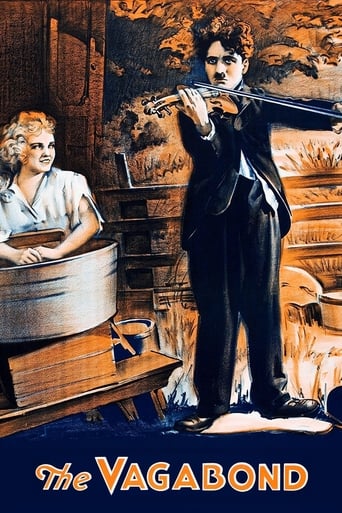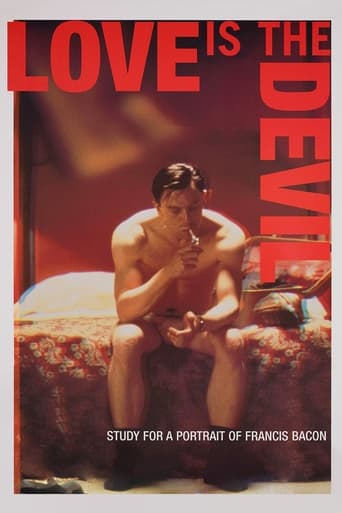guisreis
The first trait that called my attention in this short film is that it brings sequences of situations considerably independent to each other, although presented linearly. Besides that, forgive me if I am wrong, but I had the impression that this film is somewhat different from most of the Tramp's movies. Slapstick is Chaplin's trademark, off course, but in this movie, perhaps more than usual, he performs strongly cartoon-like scenes, with movements which really look like the ones shown in animated TV shows. Another interesting possible novelty is that Edna Purviance has a quite funny scene together with Charlie. She uses to be portrayed in Chaplin's movies as an unassailable beauty diva, but here she gets down the pedestal and makes we laugh at her bath. That is something very nice to see. The end is also somewhat unusual, although related to an issue that is present in almost all Chaplin's movies. These are the novelties, but, on the other hand, prejudice against gypsies is a serious drawback in my opinion. The violent kidnappers could have been non gypsies at no expense to the story. Anyway, the little tramp tried everything to make a living: even as a street musician he tried to get some coins!
lugonian
THE VAGABOND (Mutual Studios, 1916), directed by Charlie Chaplin, stars the legendary Charlie Chaplin in his third comedy short for the studio. With Chaplin's attempt with improving himself with each passing film, rather than the usual twenty minutes of slapstick and chases, he deftly blends humor and sentiment, a standard that would later become associated by his technique in storytelling. Rather than playing a trouble-making tramp, this time Charlie's a violin playing drifter with more human qualities than before.The story opens in great comedy tradition as Charlie enters a bar to play his violin for the patrons. His music is drowned out by a German street band playing outside. As the band leader enters to collect money, he finds Charlie collecting the money instead. A brawl and chase ensues until the crowd loses themselves in the confusion, giving Charlie a chance to sneak away. Charlie next approaches a gypsy drudge where he plays for a gypsy girl (Edna Purviance) washing clothes. A brief cutaway of the plot shows a society matron (Charlotte Mineau), looking at an old photo of a little girl who, believed by its movie audience to have been abducted by gypsies many years ago. Now a young woman, the girl is shown to be an abused slave to the gypsy leader (Eric Campbell). Witnessing one of her brutal whippings that leaves her senseless, Charlie steps in to rescue her, leading to a wild escape down the road in a gypsy caravan. Resting in a secluded spot on a country road, Charlie, having assisted the gypsy girl with her every needs, finds himself in stiff competition when a struggling artist (Lloyd Bacon) enters the scene, inspired by the girl's beauty and uses her as a subject matter to his latest canvas painting, "The Living Shamrock." THE VAGABOND may not be one of Chaplin's most memorable of his comedy shorts for the Mutual Studios, but it represents him here more as a comic-actor rather than a just a slapstick one. Though scripted by Chaplin himself, the story seems to have some influence to Michael Balfe opera, "The Bohemian Girl," which also involves gypsies. While THE VAGABOND could very well have become a straight dramatic story for the possible choices of a Lillian Gish and Robert Harron under D.W. Griffith's direction, instead, it's Chaplin being both Griffith and Harron, and Purviance being Gish. Because its a two-reel comedy, it leaves very little detail for plot and character development. There are moments found in the film where it looks heavily edited. Usually when comedians do drama, or mix comedy with drama, the attempt fails. Fortunately for Chaplin, his method is believable and acceptable as long as he doesn't stray too far from his usual standard of comedy. Of the Chaplin stock players, including Leo White and Frank J. Coleman, Eric Campbell, later known as "Chaplin's Goliath," stands out as the hefty villainous gypsy with the whip, while the funniest performance comes from a character playing an old white-haired gypsy hag. No screen credit is given for his or her work. If played by an actor in drag, all the funnier. And the young artist, played by Lloyd Bacon, the same Bacon who would become a notable movie director himself.Presented on commercial television in the sixties as part of "Charlie Chaplin Theater," and unseen on public broadcasting television since the 1970s, THE VAGABOND was later resurrected a decade later on cable channels and home video. Though various editions have different underscoring, ranging from orchestration to jazz rhythm and blues, Blackhawk Video's edition consisted of reissue prints presented in theaters of the 1930s with the use of sound effects and instrumental scoring to "The Vagabond Lover" and theme scoring used for the independent feature, VANITY FAIR (Allied Pictures, 1932) starring Myrna Loy. When shown on Turner Classic Movies (TCM premiere: December 6, 1999) as part of its "star of the month" tribute to Charlie Chaplin, THE VAGABOND and other Mutual shorts were broadcast in restored clear visuals, new scoring and in accurate silent film speed extending the standard 22 minute short to 34 minutes. Though that's all well and good, poor scoring most of all takes away the enjoyment of the film, leaving the most preferred viewing from Blackhawk (later Republic) Home Video. Next Chaplin short: ONE A.M. (1916) (***)
silentmoviefan
In my opinion, "The Vagabond" is Charlie Chaplain's best. He doesn't go around kicking people in the bum or basically being a jerk like he is in just about all of them. After out-witting some musicians when they all choose to play in the same site, Charlie takes his violin and goes on down the road. He runs into Edna Purvance and starts to play his instrument. Edna was captured by gypsies as a little girl. An earlier scene shows her mother sighing and looking at her picture. Edna likes the music and Charlie eventually rescues her from the gypsies. He gets the wagon well down the road. The next morning, as Charlie is gathering breakfast, he sends Edna to get some water and she runs across an artist. The artist paints her. Her mother sees the picture in a gallery and the artist tells her where he found her daughter. There's a reunion at the wagon. Charlie turns down some money the mother offers her and they all leave with Charlie by himself. Edna realizes she does have regards for Charlie, comes back and gets him and they drive away. I thought it was sweet and so much better than a lot of his shorts!
hausrathman
In "The Vagabond," Charlie plays a street musician who rescues a girl, Edna Purviance, from a gypsy camp. They set up their own little camp and Charlie soon falls in love with Edna, but before long a rival soon appears in the form of a painter who asks Edna to model for him. A wealthy woman sees the painting in an exhibit and, as a result of a birthmark, recognizes Edna as her daughter who was stolen away as a child. The mother and painter come and sweep Edna up away from Charlie. However, as they drive away, she suddenly demands that they go back and get Charlie, who gets into the car with them and they all live happily ever after."The Vagabond," the third of Chaplin's twelve films for the Mutual Company, is probably the least humorous of the series, but it is also one of the most interesting. This film is essentially a melodrama, and serves as an important creative building block toward his heartfelt feature triumphs that would follow in the twenties and beyond. Chaplin's contract with Mutual gave him the freedom to experiment, and that he did. A film like this was a riskier proposition back in the age of slapstick when comedy was comedy and drama was drama. Today, this is not the first place to look for Chaplin the laugh-getter, but an interesting curio to examine when studying Chaplin's growth as an artist.



